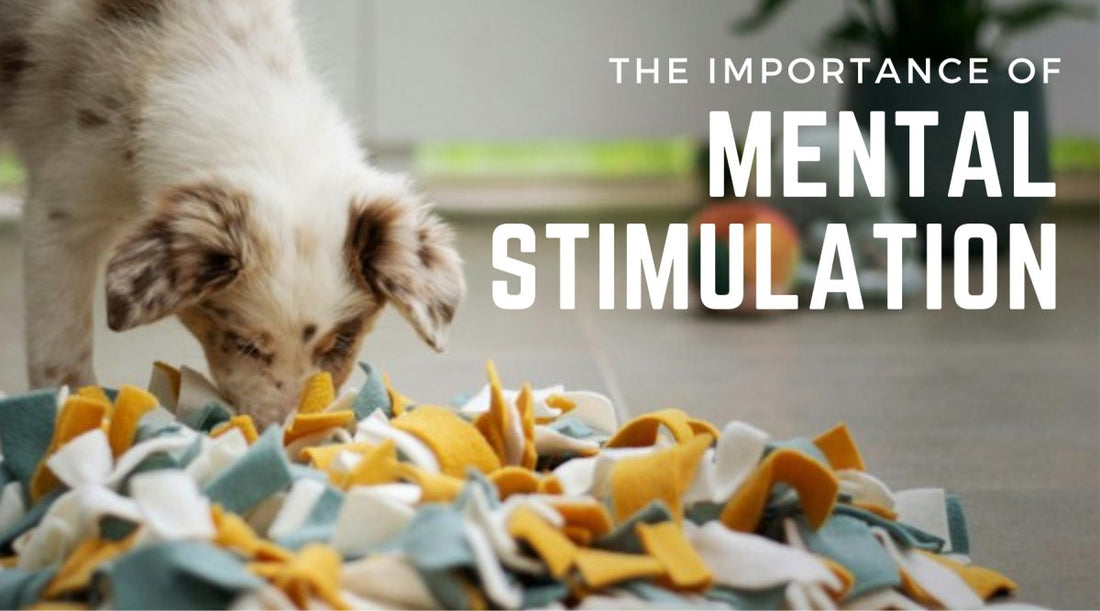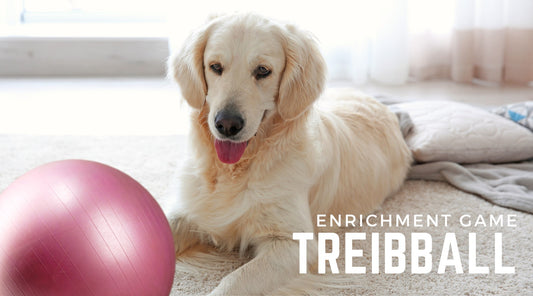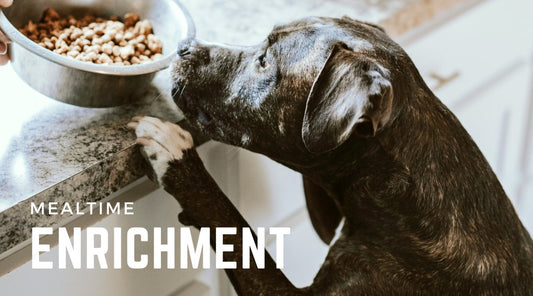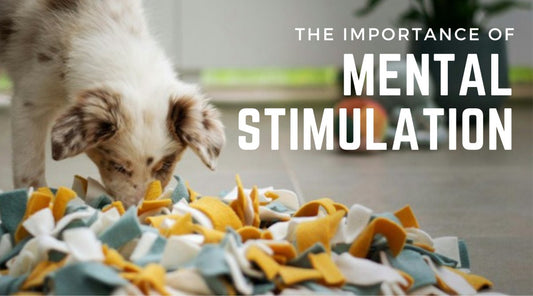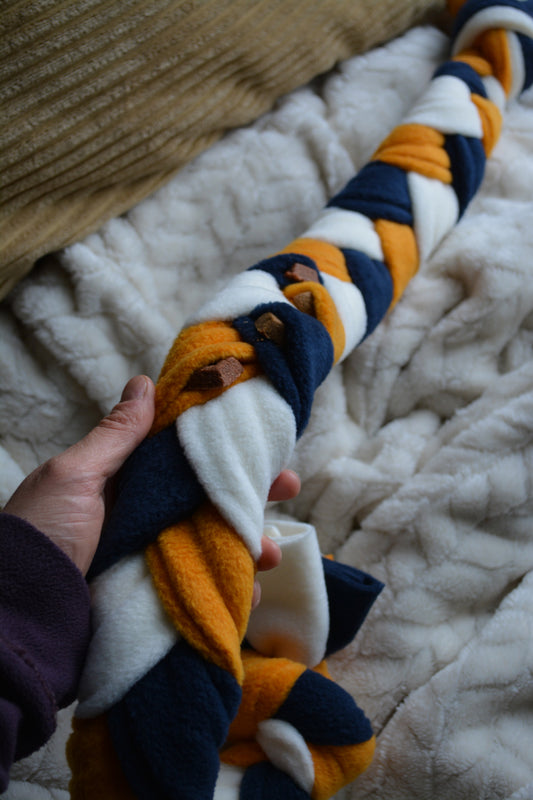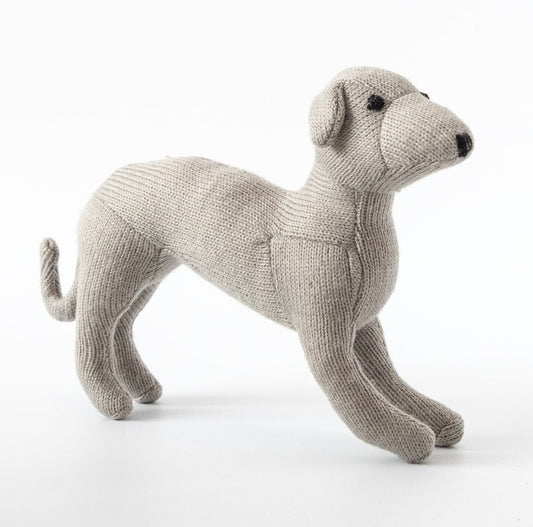Are you struggling to keep up with a high-energy dog? Does your dog seem restless, anxious or destructive at times?
If so, it may be time to start focusing on mental stimulation. Dogs, especially high-energy breeds, need mental stimulation just as much as they need physical exercise. Here’s why:

Why mental stimulation for dogs is so important
Dogs are intelligent animals that need mental stimulation to stay healthy and happy. Without it, they can become bored, anxious or even depressed.
High-energy breeds, in particular, need mental stimulation to help them burn off excess energy and feel calmer and more content.
Mental stimulation can also help with behaviour issues, such as excessive barking, leash pulling, digging or chewing.
How to provide mental stimulation for your dog
1. Puzzle Toys:
Puzzle toys, such as treat dispensers, are a great way to provide mental stimulation for dogs. They come in a variety of shapes and sizes and you can even make your own with egg boxes, cardboard boxes, towels etc. Fill them with dry food or treats and give them to your dog to figure out how to get the food out. This helps provide them with a mentally engaging, rewarding and entertaining activity. Switch up puzzle toys to keep play novel and engaging.

2. Interactive Games:
Dogs are like small children – they thrive on your input and interaction. Interactive games, such as hide-and-seek and others from the enrichment deck, can provide so much fun for dogs and help them feel connected and bonded with you. These games require dogs to use their brains and their bodies, which can be both physically and mentally stimulating.
3. Training:
Training is another great way to provide mental stimulation for dogs, so long as it’s positive, rewarding and builds their confidence. Many high-energy breeds thrive on being set a task to complete. You can use positive reinforcement to encourage certain behaviours, such as calmness, as well as training aims such as focus and recall, while challenging them mentally.
4. Socialisation:
Dogs are social animals and need interaction with others to feel happy. This needn’t be interaction with other dogs, but playing with other dogs can be a wonderful way for them to relieve stress and just be a dog. Giving your dog quality time where you are focused on them, such as a game of tug or retrieve, helps them feel content.
5. Novel Experiences:
Finally, providing your dog with novel experiences can also help with mental stimulation. If your dog is generally happy, sociable and confident, taking them on new walks, introducing them to new people or trying a new activity together can be so fulfilling. These new, interesting experiences keep your dog’s brain engaged and help prevent boredom. If your dog is struggling emotionally, such as displaying reactivity, aggression and fear, consult a behaviourist before trying new experiences.

Incorporating mental stimulation into your dog’s routine
Now that you know why mental stimulation is important and how to provide it, it’s time to incorporate it into your dog’s routine. Here are some tips:
1. Prioritise enrichment: Keep in mind that enrichment and mental stimulation are not necessarily one of the same. Enrichment provides behavioural outlets, such as opportunities for sniffing, digging, foraging etc which is innately mentally stimulating. Then there are activities that can be mentally stimulating but don’t absolutely fall into an innate behaviour category, such as training. Training can add interest to your dog’s day and create a good working relationship, though it focuses on shaping our dog to fit in with our life, rather than enrichment which helps us fit into theirs. It’s our role as carers to meet basic enrichment needs first. So just something to keep in mind when it comes to creating a balanced and fulfilled life for your dog. We need to also look at things through the dogs’ lens as well as our own.
2. Start Slow: If your dog is not used to mental stimulation, start slow. Start with simple puzzle toys or games and gradually increase the difficulty as your dog gets better at them. There’s no rush to create complex challenges, and some dogs are best suited to simple activities. Easy wins are never a bad thing!
3. Little and often: While your dog may have the physical ability to run for hours, mental challenges can tire them out much more quickly. So it’s important to wield that knowledge wisely. If you have a busy schedule, it may seem more convenient to deliver all mental stimulation for the day at once. …But the point is to add moments of interest throughout the day. I do a little at breakfast, lunch and tea which makes it easy to fit into my schedule. This helps your dog feel more stable and content and less desperate for that one hit in the day. Just like walks, if your dog only gets to leave the house once in a day, they are more likely to feel the need to get their kicks in during that time window – cue racing over to any dog they encounter, running off chasing scents etc. You don’t necessarily need to double the time you walk, it can help to break it up.
4. Always make it fun: Ensure mental stimulation is always fun for your dog and never a chore. Use treats or toys to motivate them, help them out where needed and be engaging in the way you interact with them. It’s their time, how do they want to spend it?
5. Be consistent: Incorporate mental stimulation into your dog’s daily routine. You can use the enrichment deck for daily ideas and prompts. This will make it manageable, even with a busy routine. As I mentioned earlier, I incorporate it into breakfast, lunch and dinner. Dogs can be physically and mentally tired out within a day, but it takes time to rebalance emotions and build upon true calmness.
6. Mix it up: Novelty is a core component of enrichment, so provide a variety of brain games, play and activities for your dog. This will keep them from getting bored and help them stay mentally challenged. You don’t need a constant stream of new ideas, you just need to rotate activities. Shuffle the enrichment deck as an easy way to accomplish this!
7. Let them sleep! After exercise, play, brain games and activities or other mental stimulation, ensure your dog has time to sleep. This is crucial for calmness and allows them to reduce arousal levels. Energetic play is fine so long as they then have the time and space to sleep it off.
Mental stimulation is an important part of your dog’s overall health and happiness, especially if you have a high-energy breed. By providing your dog with puzzle toys, interactive games, training, socialisation, and novel experiences, you can help prevent or resolve behaviour issues and keep your dog mentally stimulated. With a little bit of effort, you can help your dog stay mentally healthy and happy and make life easier for yourself in the process.

